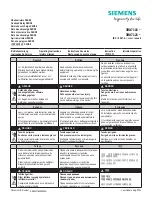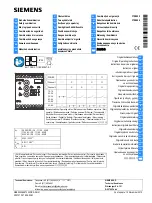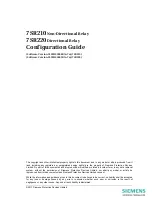
UR FAMILY – COMMUNICATIONS GUIDE
2-1
UR Family
Chapter 2: Modbus communication
Modbus communication
This chapter outlines the Modbus protocol, which is a standard protocol used for communication among devices. Use the
Modbus memory map provided when designing a client to access the UR device using Modbus.
2.1 Modbus RTU protocol
2.1.1 Introduction
The UR family supports several communications protocols to allow connection to equipment such as personal computers,
remote terminal units (RTUs), supervisory control and data acquisition (SCADA) masters, and programmable logic
controllers. The Modicon Modbus protocol is the most basic protocol supported by the UR. Modbus RTU is available via the
RS232, RS485, or USB link (for graphical front panel), and Modbus TCP/IP is available over Ethernet. The following
description is intended primarily for users who want to develop their own master communication drivers. Note that:
•
The UR always acts as a slave device, meaning that it never initiates communications. It listens and responds to
requests issued by a master computer.
•
A subset of Modbus RTU and Modbus TCP/IP protocol format is supported that allows extensive monitoring,
programming, and control functions using read and write register commands.
2.1.2 Configuration
The Modbus slave address and TCP port number are configured during installation. See the Modbus Protocol section in the
Settings chapter of the Instruction Manual.
The number of remaining Modbus TCP connections available can be viewed in the
Actual Values > Status > Comm Status
Remaining Connect
option. The value is 4 when the EnerVista software is closed. See the Remaining Connection Status
section in the Actual Values chapter of the Instruction Manual.
2.1.3 Physical layer
The Modbus RTU protocol is hardware-independent so that the physical layer can be any of a variety of standard hardware
configurations including RS232, RS485, and USB (for graphical front panel). The relay includes a front panel RS232 port and
a rear terminal RS485 port. Data flow is half-duplex in all configurations. See chapter 3 of the Instruction Manual for
communications wiring.
















































